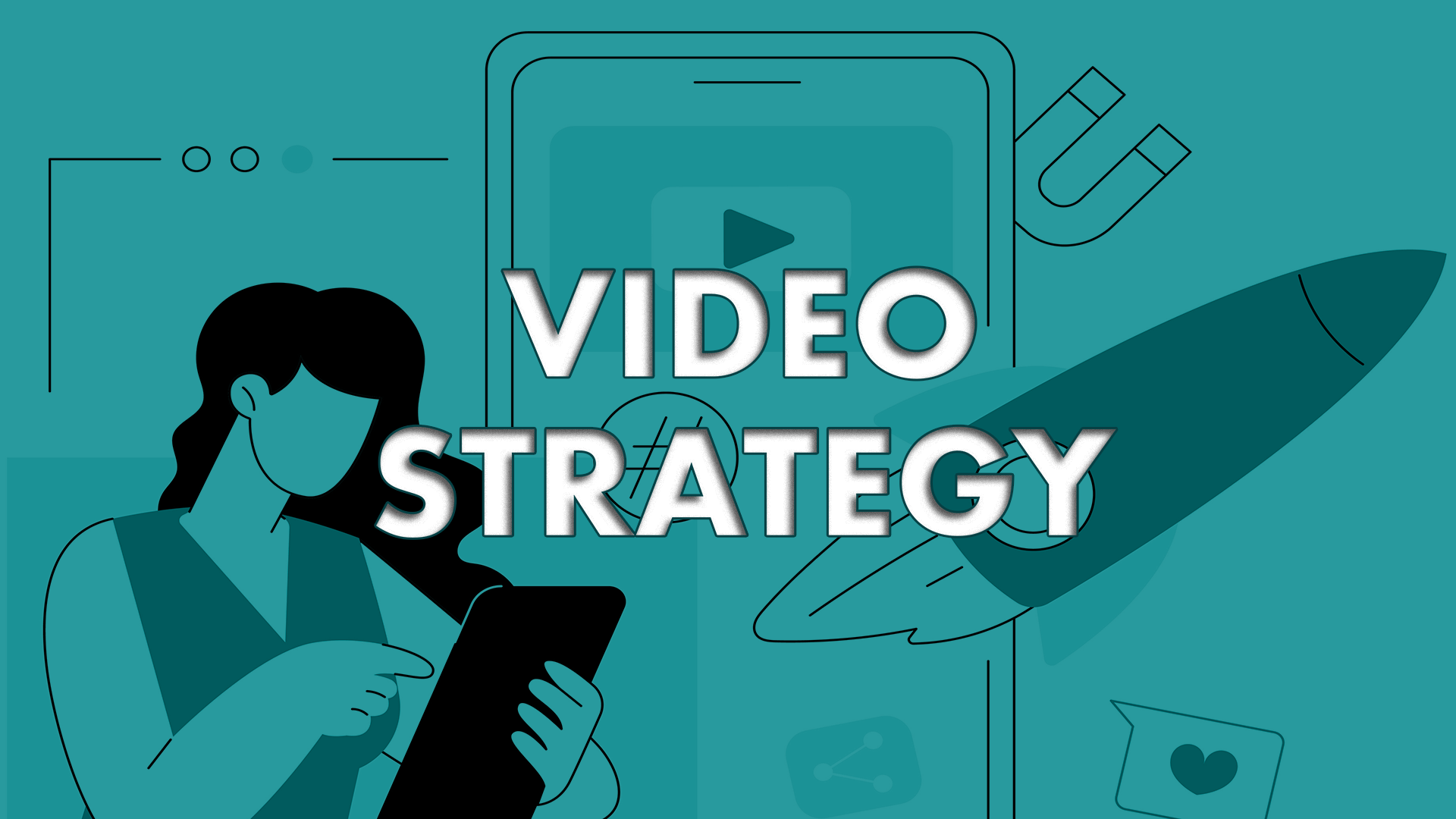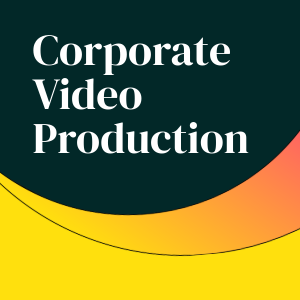
95% of marketers say video is an important part of their marketing strategy, up from 88% in 2024.
Everyone is making video content—but not everyone is making an impact. The difference between a video production that sparks engagement and one that fades into the background isn’t just aesthetics – it’s strategy.
Without a strategic foundation, even the most visually stunning production risks being ignored. To be truly effective, video must be built with intention – Who is it for? What does it need to say? Where it will be seen?
A well-thought-out video doesn’t just capture attention – it drives engagement, fuels conversations, and strengthens brand affinity.
Imagine this: you’ve poured time, energy, and budget into a corporate video production. The visuals are stunning, the messaging feels on point – but once it’s live… crickets. No engagement, no real impact, just another piece of content lost in the noise.
This happens more often than brands like to admit – not because the video wasn’t good, but because it wasn’t built strategically. Too often, video is treated as a creative task rather than an integral part of a broader communication plan.
A successful video isn’t just a well-crafted story—it’s the result of smart planning, thoughtful execution, and a clear understanding of its purpose.
So, before you dive into production, here are five essential steps to ensure your video delivers real results the first time.
1.Start with Strategy, Not Execution
One of the biggest mistakes in video marketing? Jumping straight into execution without a clear strategy.
It’s easy to get caught up in the details – what the visuals should look like, how long the video should be, or which animation style to use. But none of that matters if you haven’t defined the why.
Before anything else, ask yourself:
- What’s the core message? If someone remembers only one thing from your video, what should it be? If you can’t distil it into a single sentence, your message isn’t focused enough.
- What action do you want your audience to take? Whether it’s brand awareness, sign-ups, or engagement, your objective should dictate the creative approach.
- Who are you speaking to? A generic video speaks to no one. A video tailored to your audience’s needs and interests will resonate far more effectively.
Most importantly, your video shouldn’t exist in isolation. It needs to align with your broader marketing or communication strategy, reinforcing your brand message across multiple touchpoints.
Pro Tip: A clear, well-crafted brief is your best tool here. It doesn’t just help your production team—it keeps internal stakeholders aligned and ensures creative decisions are made with purpose, not preference.
2.Choose the Right Format for Maximum Impact
Once your strategy is defined, it’s time to select the best delivery method. This is where many brands go wrong, choosing a format based on trends rather than effectiveness. A viral animation or cinematic brand film might look impressive, but if it doesn’t align with your objectives, audience, or message, it won’t deliver the impact you need.
To find the right format, ask yourself:
- What’s the most effective way to communicate your message? Would a high-energy motion graphic, a human-led narrative, or a stylised brand animation work best?
- Does your audience connect more with story-driven content or data-driven visuals? Emotional narratives can be powerful, but if your audience values hard facts, an infographic-style animation or expert-led explainer might be a better fit.
- Where will the video be viewed? A social media ad requires a different approach than an internal training video or a conference presentation.
- Will the video need to be adapted for multiple platforms? If so, consider how you might create versions tailored for LinkedIn, Instagram, email marketing, or website integration.
- What’s the shelf life of the content? If your message is evergreen, an animated explainer might have a longer lifespan than a live-action piece featuring specific people or products.
- Does the format align with your brand identity? A playful, high-energy video may work for some brands, while others require a more polished, professional approach.
Choosing the right format isn’t just about aesthetics, it’s about ensuring your video is effective, adaptable, and aligned with your overall marketing strategy.
Different video delivery formats serve different purposes
6 Different Video Formats and Their Purpose:
1.Animated Explainer Videos: Simplify Complex Ideas
Animated explainer Videos break down complex products, services, or processes into clear, engaging visuals that make information easy to understand. They are perfect for distilling technical or abstract topics into a compelling narrative, keeping audiences engaged without overwhelming them with details.
Animated Explainer Video Case Study
Client: PDA Society
2.Brand Films: Build Emotional Connection
Brand films take your mission, values, and identity and bring them to life through the power of visual storytelling. They don’t just tell people who you are; they show them why you matter, creating a deeper emotional connection with your audience.
Brand Film Case Study
Client: AerCap
3.Motion Branding: Strengthen Visual Identity
Motion branding ensures your brand is instantly recognisable by integrating animated logos, custom graphics, and dynamic typography across all your video content. It reinforces brand consistency and leaves a lasting impression, making every piece of content feel uniquely yours.
Motion Branding Case Study
Client: Status Online
-
Live Action Videos: Humanise Your Message
Live-action videos put real people in front of the camera, making your brand feel more relatable and trustworthy. Whether it’s a customer testimonial, CEO message, or behind-the-scenes look, live action adds authenticity and fosters human connection.
Live-Action Film Case Study
Client: Grosvenor Group
- Hybrid (Live Action + Animation): Balance Emotion & Clarity
A hybrid approach combines the emotional appeal of live action with the clarity of animation, making it ideal for product demos, industry insights, and corporate storytelling. This format blends the best of both worlds, engaging audiences while delivering key information effectively.
Hybrid Case Study
Client: TMF Group
-
Event Videos: Captivate Live Audiences
Event videos are built to make an impact on big screens at conferences, trade shows, and corporate presentations. With bold motion graphics, cinematic storytelling, and high-energy visuals, they command attention in a crowded space and leave a lasting impression.
Great Videos Start with Great Strategy.
At Content Creatures, we blend creativity with strategy to craft content that connects, engages, and supports your business objectives.
3.Collaboration is Key, Involve Stakeholders at the Right Time
There’s nothing worse than an endless loop of revisions, where feedback contradicts itself, deadlines slip, and the creative vision gets watered down.
The cause? Stakeholders weren’t involved at the right time.
Avoid common pitfalls by:
- Secure leadership buy-in early: Delays often happen when key decision-makers only see the video at the final stage. Aligning on objectives from the start prevents major last-minute changes.
- Establish a structured approval process: Define clear milestones for feedback and sign-off at different stages—concept, script, storyboard, and final edit—to keep everything moving smoothly.
- Get feedback regularly, but strategically: Don’t wait until the final edit to gather input. Consistent but controlled feedback ensures the project stays aligned without derailing creativity.
- Limit the number of decision-makers: More voices don’t always mean better decisions. Assigning two or three key contacts from relevant teams (e.g., marketing, brand, leadership) helps streamline communication and approvals.
Effective collaboration isn’t about involving more people—it’s about involving the right people at the right time. By structuring feedback and approvals efficiently, you’ll keep your project moving forward while protecting the creative vision.
4.Set a Realistic Budget and Timeline
A well-executed corporate video production requires clear planning, both financially and logistically. Without a defined budget and timeline, projects can stall, exceed costs, or feel rushed—leading to unnecessary compromises in quality.
Setting a Realistic Budget
Most marketers (81%) have a specific video marketing budget, representing 41% to 60% of total marketing spend. This underscores the significance of allocating dedicated resources to video production.
If you’re outsourcing video production services, having a clear budget in mind helps you:
- Find the right creative partner. Knowing what you can invest allows you to approach corporate video production services that align with your expectations.
- Define the scope of work. More complex projects- such as custom animation, detailed motion graphics, or live-action shoots – require a higher budget than simple explainer videos.
- Avoid unexpected costs. Outlining needs vs. nice-to-haves early helps prevent budget creep.
Understanding the Timeline
Video production isn’t instant. On average, a high-quality project takes 6-8 weeks, and more intricate animations or large-scale productions may take longer. To stay on schedule:
- Work backward from your launch date. If your video is tied to an event, campaign, or product launch, plan at least three months ahead.
- Account for feedback and approvals. Stakeholder reviews can extend timelines, so factor in time for revisions.
5. The Final (and Most Important) Decision You’ll Make
Video production is a significant investment, so choosing the right creative partner is critical.
You don’t just need a team that can follow a brief—you need one that truly understands your brand, your audience, and your objectives. A team that thinks strategically, challenges creatively, and refines relentlessly.
At Content Creatures, we believe every brand is unique, and your content should reflect that, we take the time to get to the heart of your brand, shaping ideas that are distinctive, engaging, and perfectly aligned with your goals.
Our Proven Process: 5 Steps to a Successful Video Project
A strong creative process is the foundation of a successful video project. Here’s how we do it:
- Collect – Immersing Ourselves in Your Brand
A successful project starts with a clear, strategic brief. We begin with an in-depth kick-off session, where we listen to your challenges, goals, and audience insights. This ensures we create content that’s not just visually compelling but strategically effective.
- Consider – Crafting ‘The Big Idea’
This is where creativity meets strategy. Based on the approved brief, our team develops two distinctive creative routes for you to choose from, each designed to capture attention and deliver results.
- Consolidate – Designing a Cohesive Vision
Once a creative route is chosen, we refine and expand on the concept, shaping storyboards, animation styles, and key visual elements. This stage ensures alignment and clarity before full production begins.
- Create – Bringing the Vision to Life
Now, the real magic happens. Whether it’s animation, live-action filming, illustration, or editing, our expert team gets to work crafting your content. At key milestones, you’ll have opportunities to review, feedback, and refine.
- Circulate – Maximising Your Video’s Reach
With final approvals in place, we master the content, ensuring it’s ready for your chosen platforms. From broadcast to social media, events to internal comms, we optimise everything for impact.
The right video, the right way, the first time.
Big ideas deserve the right creative partner.
Whether you need a quote or just want to explore possibilities, let’s start the conversation. Get in touch today



